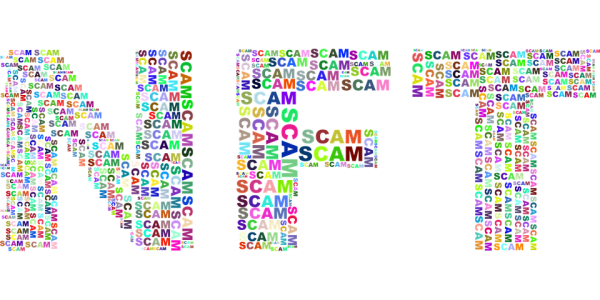October 20, 2023
By Anjali Kochhar
The world of cryptocurrencies is an ever-evolving field that offers new challenges as well as growth opportunities with the passage of each day. While the field demands change at each step, there is one constant that drives it: the need for regulatory oversight and risk management. So, it is no wonder that the international organization,IMF, has come forward with the new cutting-edge tool: the Crypto-Risk Assessment Matrix (C-RAM). This innovative tool has the potential to transform how governments, regulators, experts, and market players evaluate and mitigate systemic risks related with cryptocurrencies. How? Let’s find out.
“As cryptocurrency adoption gains momentum, regulators are looking towards the intricate challenge of striking a delicate equilibrium between fostering innovation and ensuring financial stability,” says Mr. Edul Patel, CEO & Co-founder of Mudrex. The Financial Stability Board (FSB) and the IMF issued recommendations at the G20 Summit this year that emphasized the possible dangers related to cryptocurrencies. By publishing a report that evaluates macro financial risks associated with crypto assets, the IMF has taken a brave step forward. The suggested country-level Crypto Risk Assessment Matrix (C-RAM) is expected to play a key role in preserving financial stability and the interests of regular investors.
Since the cryptocurrency market is characterized by the quality of rapid transformation and susceptibility to market volatility, such a tool turns out to be a game-changer. For governments and regulatory bodies that are in the debate about how to maximize the benefits of cryptocurrency while minimizing the risks, this tool acts as a perfect aid for achieving the balance.
The CEO of Giottus Crypto Platform, Vikram Subburaj, acknowledges the significance of the IMF research, adding “Assessing Macrofinancial Risks from Crypto Assets’ is the second decisive and directional output from the IMF after the FSB-IMF Synthesis Paper (published September 7). As a virtual digital assets (VDA) platform that has been the flag-bearer of regulation, compliance, and awareness creation, we wholeheartedly welcome the paper.”
The industry’s growing understanding of the value of strong regulatory frameworks is reflected in Subburaj’s thoughts. In this study, the idea of a country-level Crypto Risk Assessment Matrix (C-RAM), which will be an essential resource for market participants, specialists, and regulators, is introduced. The C-RAM provides a methodical approach to comprehending the risks, indicators, triggers, and potential regulatory responses of the crypto ecosystem.
IMF introduces a three-fold approach through C-RAM.
Risk assessment
The primary aim of the new IMF tool is risk assessment. With the help of the tool, one can identify potential risks within a specific region’s cryptocurrency market. How? Well, The C-RAM provides a complete risk assessment by assessing multiple elements such as market volatility, investor behavior, and regulatory climate. This helps stakeholders understand the particular issues that each country faces.
Growth assessment
In addition to risk evaluation, the C-RAM examines the development potential of each country’s crypto sector. This report provides insights into the crypto industry’s growth potential by examining criteria such as market size, innovation, and technological infrastructure.
Policy response
Finally, C-RAM assists policymakers in developing personalized responses to challenges and ensuring financial stability, using information from risk and growth assessments. In fact, here is where the technology truly shines, as it assists policymakers in properly navigating the complex world of crypto assets.
Mr. Edul Patel underlines the importance of undertaking risk and growth assessments with the help of C-RAM at the national level. He emphasizes that the primary threat to financial stability lies within each country, making it vital to localize risk assessments and policy responses.
In other words, the C-RAM offers a useful method for countries to recognize and manage the risks associated with cryptocurrencies in a proactive manner. It is a personalized strategy rather than a one-size-fits-all approach that takes into account the unique characteristics and difficulties of each crypto community. This flexibility is essential because it ensures that policy responses are tailored to each nation’s particular needs and challenges.
For platforms like Giottus, which have been at the forefront of promoting regulation, compliance, and awareness within the crypto industry, the C-RAM is indeed a valuable resource. Subburaj notes, “We also see C-RAM as a valuable resource that can complement Giottus’ efforts at promoting transparency and trust within the crypto ecosystem.” This tool will not only enhance the transparency and trustworthiness of crypto markets but also help regulators and market participants navigate the evolving landscape with confidence.
Conclusion
To sum it up, the IMF’s development of the Crypto Risk Assessment Matrix (C-RAM) is a big step forward in the drive to preserve financial system stability in the face of digital currency innovation. This unique tool helps regulators and market participants to identify and manage the risks associated with cryptocurrencies by providing a country-specific, data-driven approach to risk assessment and policy response. So, as digital assets continue to revolutionize the financial landscape, the C-RAM will play an important role in ensuring financial stability and fostering trust in this industry.
About the author
Anjali Kochhar covers cryptocurrency stories in India as well as globally. Having been in the field of media and journalism for over three years now, she has developed a sharp news sense and works hard to present information that goes beyond the obvious. She is an avid reader and loves writing on a wide range of subjects.



